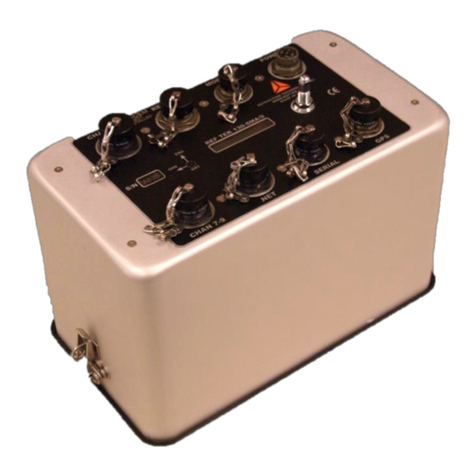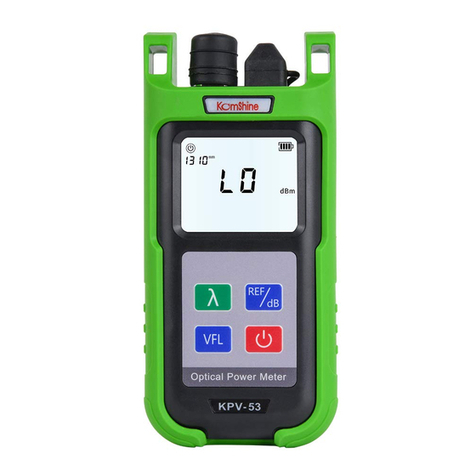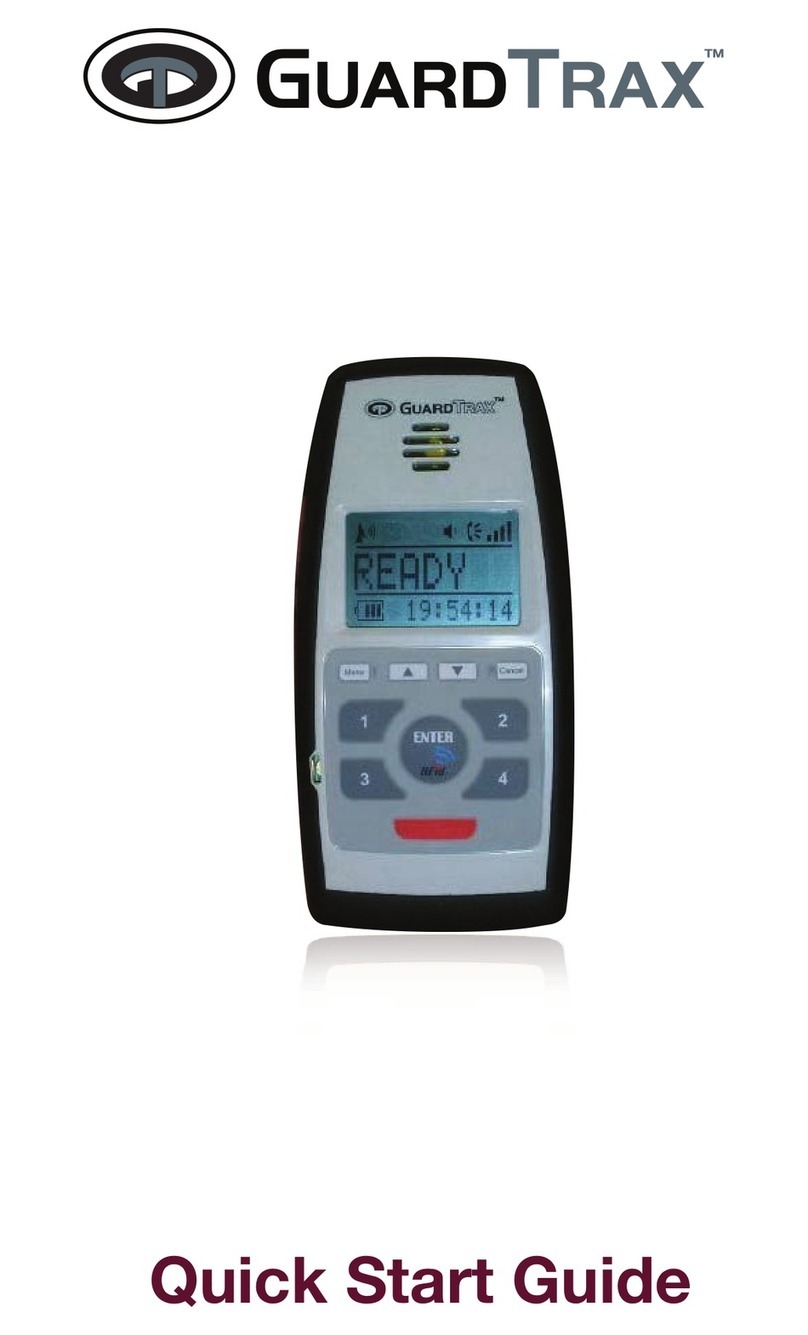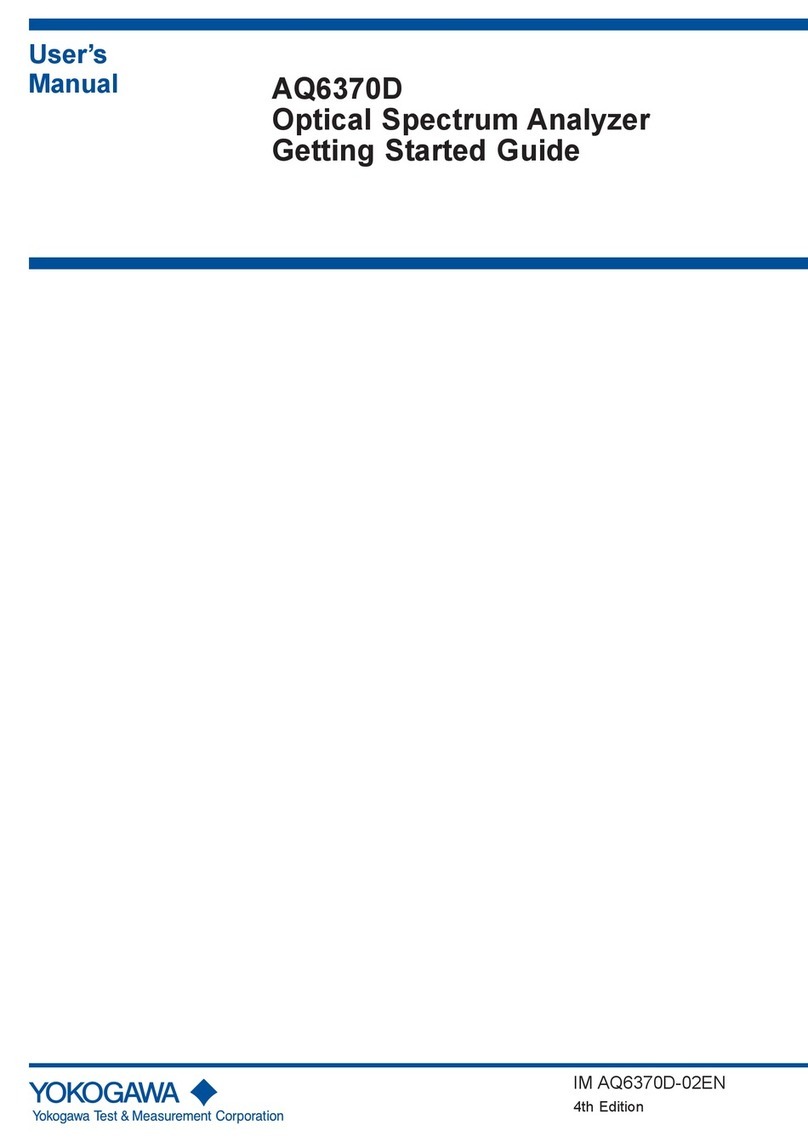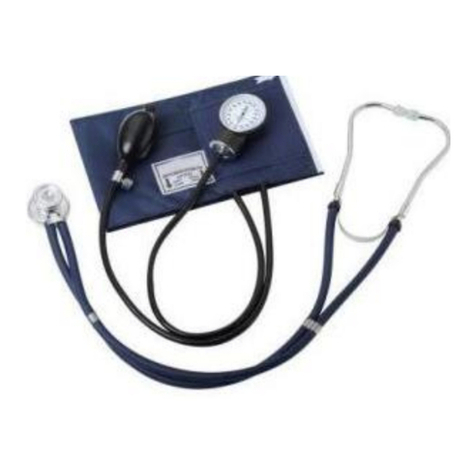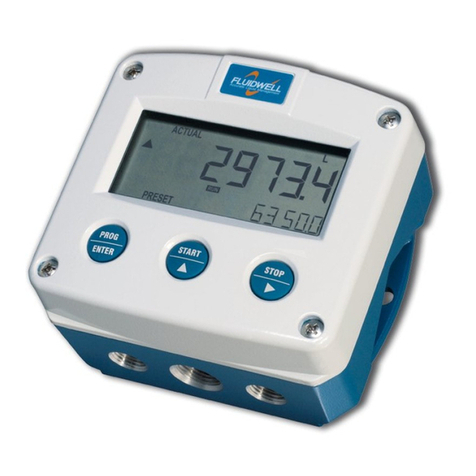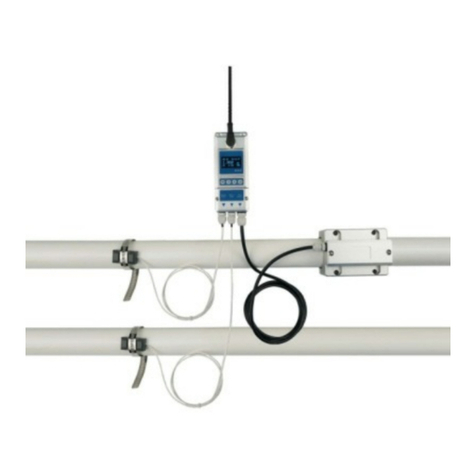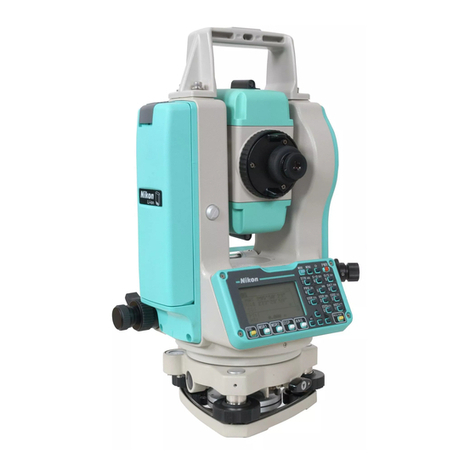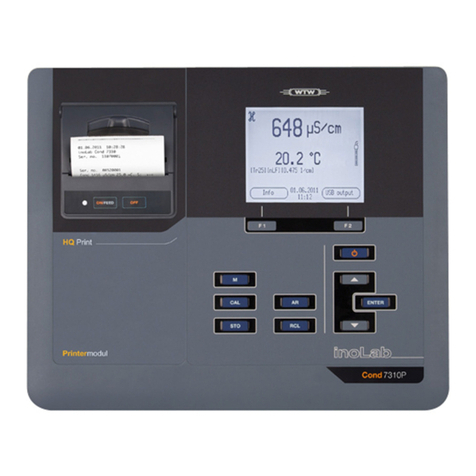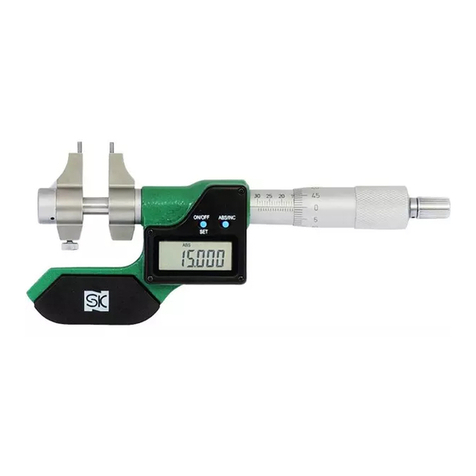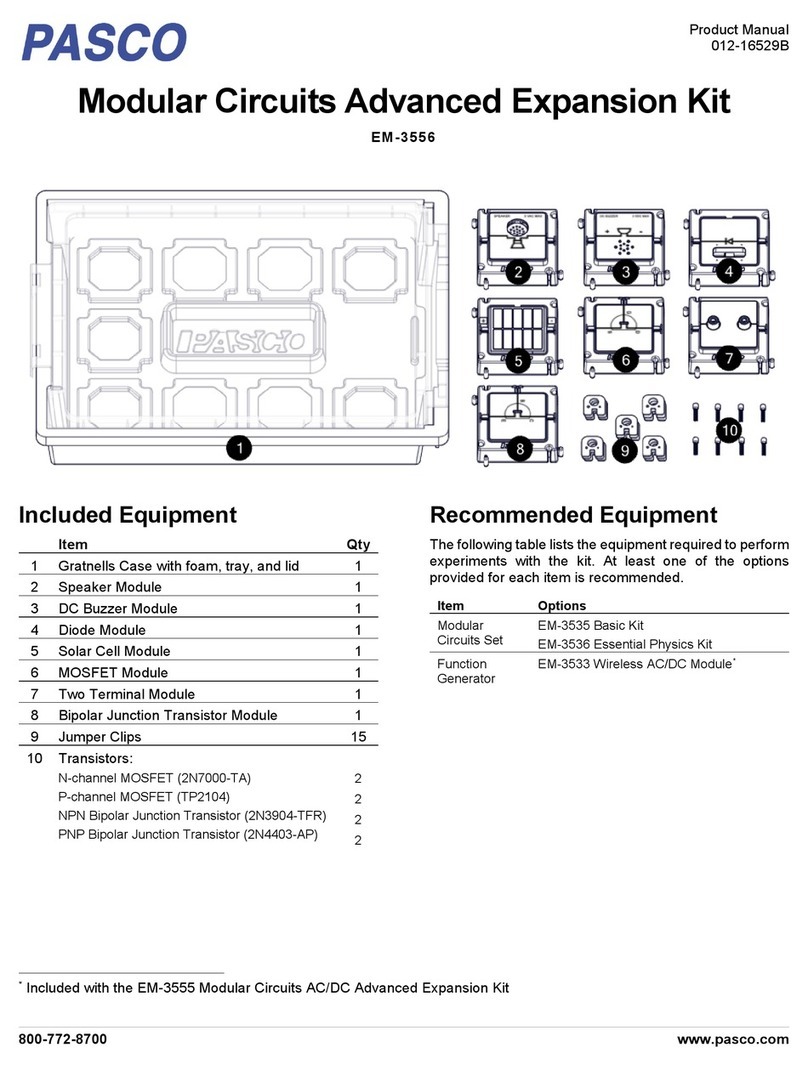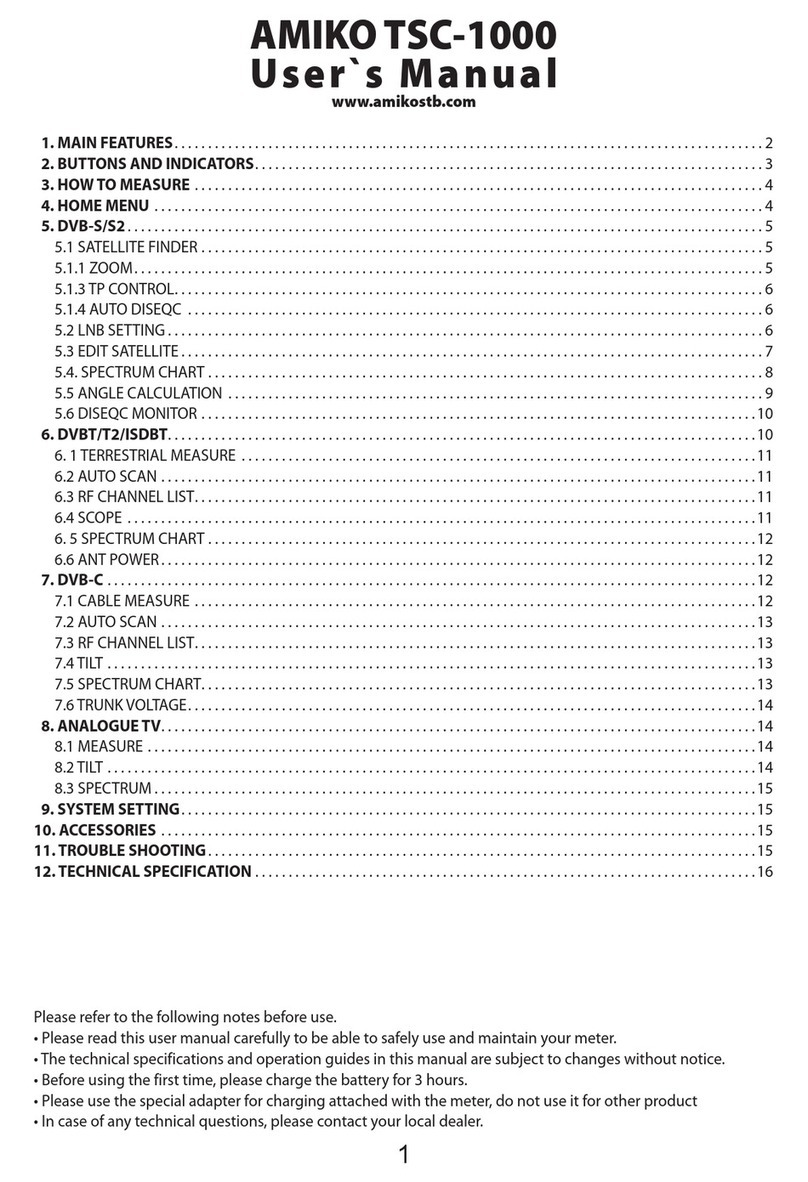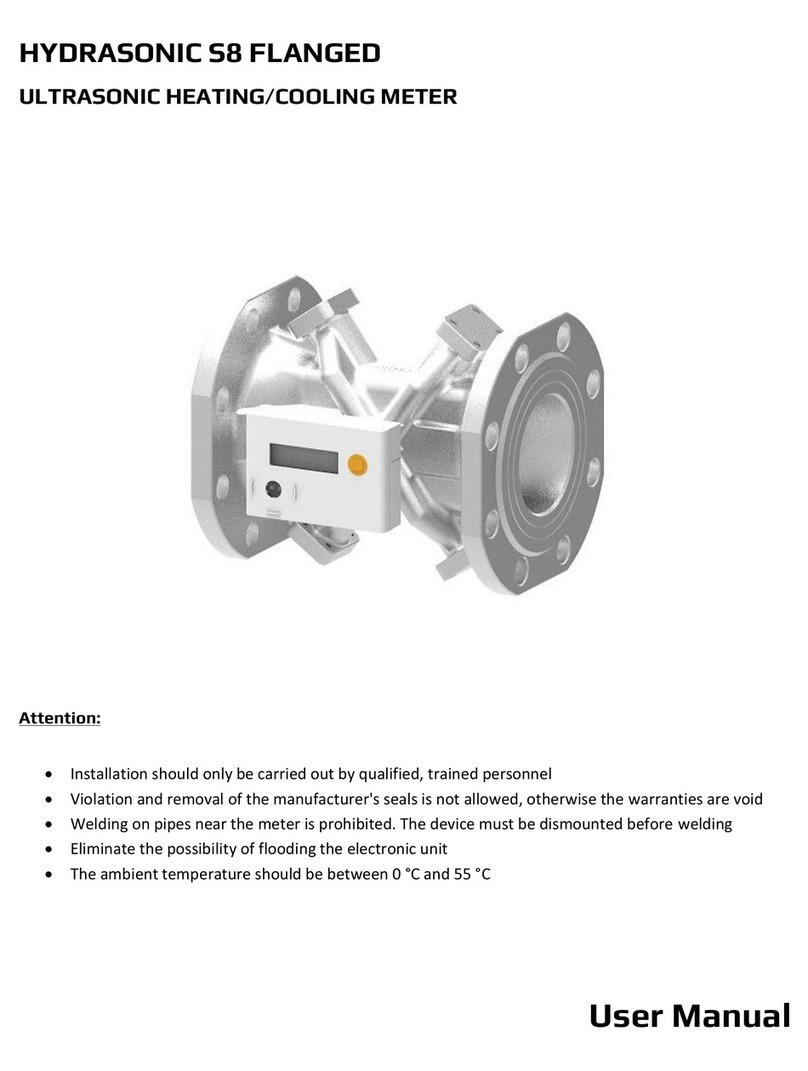International Tapetronics Corporation 99B Series User manual

'I
li
'■
!'!■
I'
]
©
o
/
JiTI
‘
I
TECHNICAL
MANUAL
SERIES
99B
CARTRIDGE
MACHINE
REPRODUCER/RECORDER
iniGRfiRTIOfiAL
TAPETROAICS
CORPORATOR
'
2425
South
Main
Street
Bloomington,
Illinois
61701
_OOOOOOOOOO
‘
-_
0

SERIES
9W
CAR RIDGE
MACHENE
REPRODUCER/RECORDER
ECHNICAL
MANUAL
(890-0022-000)
IN ERNA IONAL
APE RONICS
CORPORA ION
2425
South
Main
•
Bloomington,
Illinois
elephone:
309/828-1381

©1982
ITC/3M
Printed
in
U. .A.
MADE
UNDER
ONE
OR
MORE
OF
THE
FOLLOWING
PATENT
ira
&38
3.042JM
4.105.934
4.040.114
4.142.221
4.101.937
D248.333
4,153.018
4.221.316
4.219.167
OTHER
PATENT
PENDING

PREFACE
HE
H C
INS RUC ION
MANUAL
International
Tapetronics
Corporation
Manuals
are
written
with
the
intent
of
assisting
the
reader-user
toward
a
better
understanding
of
ITC
equipment.
Most
instruction
manuals
are
seldom
read
except
at
the
time
of
crisis
when
equipment
malfunction
is
suspected.
When
this
happens,
the
manual
is
usually
missing,
or
at
best,
difficult
to
locate.
P EASE
FIND
A
CONVENIENT
SPOT
TO
KEEP
THIS
MANUA .
We
at
ITC
have
tried
to
produce
a
useable
manual.
But,
being
human,
we
are
subject
to
the
frailities
of
be
havior.
Therefore,
should
you
discov
er
any
errors
or
amissions,
or
should
you
wish
to
contribute
any
recommenda
tions,
please
send
us
your
comments.
We
will
be
most
appreciative.

ABLE
OF
CON EN S
Page
SECTION
I
.
INTRODUCTION/SPECIFICATIONS
1-1
INSTA ATION
AND
OPERATION
SECTION
II.
2-1
3-1
SECTION
III.
MECHANICA
ADJUSTMENTS
4-1
SECTION
IV.
MECHANICA
DRAWINGS
5-1
E ECTRICA
ADJUSTMENTS
SECTION
V.
1-1
1-2
A.
General
Description
B.
Specifications
....
A.
General
..
B.
Reproducer
C.
Recorder
.
Installation
..............
External
Audio
Connections
.
External
Control
Connections
Controls
and
Indicators
....
Operational
Options
.......
2-1
2-1
2-2
2-5
2-8
3-1
3-1
3-2
3-5
3-5
3-5
3-6
3-6
3-9
3-9
3-1
2
3-12
3-1
3
A.
B.
C.
D.
E.
A.
B.
C.
D.
E.
F.
E.
F.
G.
H.
I
.
J.
K.
.
M.
J.
K.
.
M.
N.
A.
Important
Considerations
....................
Bo
Pressure
Roller
Shaft/Cross
Shaft
Clamp
Adjust
C.
Capstan
Shaft
(Motor)
Positions
...........
D.
Pressure
Roller
Pressure/Solenoid
Adjustment
.
Solenoid
Dampening
Adjustment
...............
Cartridge
Guidance
System
Alignment
.........
Tape
Guide
Adjustment
.......................
Head
Height
and
Zenith
Adjustment
...........
Monophonic
Head
Azimuth
Adjustment
..........
Stereo
System
Head
Azimuth
Adjustment
.......
Head
Replacement
...........................
Recording
Head
imit
Switch
Adjustment
......
Splice
ocator
Sensor
Adjustment
............
5-1
•
5-1
5-3
Front
Panel
of
Reproducer
with
Dimensions-Figure
4-1
...
4-1
Front
Panel
of
Recorder
with
Dimensions-Figure
4-2
....
4-2
Rear
View
of
Reproducer
-
Figure
4-3
..................
4-2
Rear
View
of
Recorder
-
Figure
4-4
....................
4-2
Top
View
of
Reproducer
-
Figure
4-5
...................
4-3
Bottom
View
of
Reproducer
-
Figure
4-6
................
4-4
G.
Top
View
of
Recorder
-
Figure
4-7
.....................
4-5
H.
Bottom
View
of
Recorder
-
Figure
4-8
..................
4-6
I.
NAB
Track
Format
-
Figure
4-9
.........................
4-7
Expanded
View
of
Playback
Deck
-
Figure
4-10
..........
4-9
Expanded
View
of
Playback
Deck
with
E SA
-
Figure
4-11..4-11
Deck
and
Shield
-
Figure
4-12
.........................
4-12
Capstan
Motor
Assembly
-
Figure
4-13
..................
4-12
Solenoid
Assembly
-
Figure
4-14
.......................
4-12

6-1
D.
F.
G.
I.
J.
K.
.
M.
6-3
6-4
6-4
6-5
6-6
6-7
6-7
6-8
6-9
6-9
6-10
6-1
1
6-1
1
6-12
6-13
6-13
6-19
6-20
6-21
6-14
6-1
5
6-15
6-16
6-16
6-16
6-24
6-25
6-25
6-26
6-26
6-26
6-17
6-17
&
6-18
6-18
6-22
6-22
&
6-23
6-23
SECTION
VI.
E ECTRICA
DRAWINGS
A.
Block
Diagram
Series
99B
B.
Servo
1.
Schematic,
Figure
6-1
2.
Component
oading
and
Overlay,
Figure
6-2
3.
Parts
ist
.
.
C.
Play
and
Cue
Amp
1.
Schematic,
Figure
6-4
2.
Parts
ist
3.
Stereo
Component
oading
and
Overlay,
Figure
6-5
4.
Mono
Component
oading
and
Overlay,
Figure
6-6
.
E SA
Control
1.
Schematic,
Figure
6-7
2.
Component
oading
and
Overlay,
Figure
6-8
3.
Parts
ist
E.
Play
ogic
Control
1.
Schematic,
Figure
6-9
.........................
2.
Component
oading
and
Overlay,
Figure
6-10
3.
Parts
ist
Reproducer
Mother
Board
1.
Schematic,
Figure
6-11
2.
Component
oading
and
Overlay,
Figure
6-12
3.
Parts
ist
Flexible
Switch
Board
1.
Schematic,
Figure
6-13
2.
Component
oading
and
Overlay,
Figure
6-14
3.
Parts
ist
H.
Play
Erase
Phase
Card
1.
Component
oading
and
Overlay,
Figure
6-15
2.
Schematic,
Figure
6-16
3.
Parts
ist
Record
and
Meter
Amp
Card
1.
Schematic,
Figure
6-17
.........................................................
2.
Parts
List
3.
Component
oading
and
Overlay,
Figure
6-18
....
Record
Bias
Card.
1.
Schematic,
Figure
6-19
.........................................................
2.
Parts
List
3.
Component
oading
and
Overlay,
Figure
6-20
Record
ogic
Control
1.
Schematic,
Figure
6-21
........................
2.
Parts
List
r
3.
Component
Loading
and
Overlay,
Figure
6-22
..........
Record
Mother
Board
1.
Schematic,
Figure
6-23
........................
2.
Component
oading
and
Overlay,
Figure
6-24
3.
Parts
ist
................
Record
Meter
Board
1.
Component
oading
and
Overlay,
Figure
6-25
2.
Schematic,
Figure
6-26
.......................
3.
Parts
ist

Page
N.
7-1
MAINTENANCE
SECTION
VII.
8-1
WARRANTY
SECTON
VIII.
6-27
6-27
6-28
6-28
6-29
7-1
7-1
7-1
O.
P.
A.
General
..
B.
Mechanical
C.
Electrical
Record
Switch
Board
1.
Schematic,
Figure
6-27
2.
Parts
ist
.
.
.
3.
Component
oading
and
Overlay,
Figure
6-29
.E.D.
Board
Component
oading
and
Overlay,
Figure
6-29
Record
Chassis
(Stereo)
Parts
ist
..............

ILLUSTRATIONS
Figure
Number
Page
Number
2-1
2-2
2-3
2-4
2-5
2-6
2-7
2-8
2-
9
2-
10
3-
1
3-2
3-3
3-4
3-5
3-6
3-7
3-8
3-
9
3-
10
3-11
3-12
3-13
3-14
3-15
3-16
3-17
3-
18
4-
1
4-2
4-3
4-4
4-5
4-6
4-7
4-8
4-
9
4-
10
4-11
4-12
4-13
4-14
5-
1
6-
1
2-1
2-2
2-2
2-2
2-3
2-4
2-4
2-6
2-6
2-
6
3-
1
3-2
3-2
3-3
3-3
3-4
3-5
3-5
3-6
3-7
3-7
3-8
3-
8
3-11
3-12
3-13
3-14
3-
14
4-
1
4-2
4-2
4-2
4-3
4-4
4-5
4-6
4-7
4-8
4-
9
4-
12
4-12
4-12
5-
2
6-
1
Reproducer/Recorder
Rack
Mount
Dimensions
Reproducer
Front
Panel
Dimensions
Reproducer
Audio
CUtput
Connections
Recorder
Audio
Input
Connections
Sample
Remote
Control
Schematic
Reproducer
Rear
View
Connectors
...
Recorder
Rear
View
Connectors
....
Front
View
Recorder
Controls
... ....
*
Front
View
Reproducer
Controls
..
..
Recorder
Meter
and
Function
Switches
....
Pressure
Roller
Pressure
Gauge
Solenoid
inkage
...........
Top
View,
Solenoid
inkage
and
Cross
Shaft
Clamp
Setup
Correct
ocation
of
Pressure
Roller
in
Deck
......
Correct
ocation
of
Motor
and
Pressure
Roller
Shaft
..
Proper
Adjustment
for
Solenoid
.... ....
Proper
Adjustment
for
Pressure
Roller
Pressure
Air
Dampening
Adjustment
ypical
NAB
ype
AA
Cartridge
Proper
ocation
of
Cartridge
....................
Proper
Use
of
Tape
Height
Gauge
.
Azimuth
and
Zenith
Adjustment
...................
Zenith
Adjustment
.
E SA
System
Adjustment
Oscilloscope
Pattern
for
Azimuth
Adjustments
.
Head
Seating
Placement
Top
View
Splice
ocate
Adjustment
.
Side
View
ocate
Adjustment
....................
Front
Panel
of
Reproducer
with
Dimensions
.
Front
Panel
of
Recorder
with
Dimensions
Rear
View
of
Reproducer
.
Rear
View
of
Recorder
.
Top
View
of
Reproducer
.
Bottom
View
of
Reproducer
.
Top
View
of
Recorder
...........................
-
Bottom
View
of
Recorder
.
NAB
Track
Format
-
Mono
(top)
and
Stereo
(bottom)
.
Expanded
View
of
Playback
Deck
.
Expanded
View
of
Playback
Deck
with
E SA
Cations
....
Deck
and
Shield
...............................
Capstan
Motor
Assembly
Solenoid
Assembly
Motor
Control
Wave
Form
for
Adjustment
Block
Diagram
Series
99
b

I USTRATIONS
(Continued)
L
Figure
Number
Page
Number
6-1
6-2
6-4
6-5
6-6
6-7
6-8
6-9
6-10
6-11
6-12
6-13
6-14
6-15
6-16
6-17
6-18
6-19
6-20
6-21
6-22
6-23
6-24
6-25
6-26
6-27
6-28
6-29
6-3
6-4
6-5
6-7
6-7
6-8
6-9
6-10
6-11
6-12
6-13
6-14
6-15
6-16
6-16
6-17
6-18
6-19
6-21
6-22
6-23
6-24
6-25
6-26
6-26
6-27
6-28
6-29
Series
99B
Servo
Schematic
...........................
Series
99B
Servo
Component
oading
and
Overlay
..........
Play
and
Cue
Amp
Card
Schematic
.......................
Play
and
Cue
Amp
Cart
Component
oading
and
Overlay
(Stereo).
Play
and
Cue
Amp
Cart
Component
oading
and
Overlay
(Mono)
..
E SA
Corirol
Schematic
...............................
E SA
Control
Component
oading
and
Overlay
..............
Play
ogic
Control
Schematic
.........................
Play
ogic
Control
Component
oading
and
Overlay
.........
Reproducer
Mother
Board
Schematics
..........................................
Reproducer
Mother
Board
Component
oading
and
Overlay
.....
Flexible
Switch
Board
Schematics
......................
Flexible
Switch
Board
Conponent
oading
and
Overlay
......
Play
Erase
Phase
Card
Component
oading
and
Overlay
......
Play
Erase
Phase
Card
Schematic
.......................
Record
and
Meter
Amp
Card
Schematic
...................
Record
and
Meter
Amp
Card
Component
oading
and
Overlay
...
Record
Bias
Card
Schematic
...........................
Record
Bias
Card
Component
oading
and
Overlay
..........
Record
ogic
Control
Card
Schematic
...................
Record
ogic
Control
Card
Component
oading
and
Overlay
...
Record
Mother
Board
Schematic
........................
Record
Mother
Board
Component
oading
and
Overlay
........
Record
Meter
Board
Component
oading
and
Overlay
........
Record
Meter
Board
Schematic
.........................
Record
Switch
Board
Schematic
........................
Record
Switch
Board
Component
oading
and
Overlav
........
.E.D.
Board
Component
oading
and
Overlay
.............

SEC ION
I.
IN RODUC ION
/
SPECIFICA IONS
I.
introduction
/
specifications
1-1
realized
by
mechanical
interaction
between
any
of
the
Steel
ball
pivots
combine
with
a
to
permi
t
much
The
entire
head
nodule
be
relieved
without
destroying
pre
adjustments
thus
allowing
for
and
flexi-
This
serves
to
lower
the
operating
tem
perature.
Faster
tape
stop
time
occurs
because
less
field-to-collapse
in
the
winding
produces
faster
solenoid
plunger
release.
This
results
in
minimal
tape
overshoot.
The
entirely
new
true,
center-pivot
head
module
is
designed
with
rotational
axis
in
the
exact
vertical
and
horizon
tal
centerline
of
the
heads.
Height,
zenith
and
azimuth
adjustments
are
in
dependent
and
individually
lock,
preven
ting
interaction
between
any
of
three,
longer
azimuth
pivot
finer
tuning,
can
vious
adjustments
thus
greater
interchangeability
bility.
Performance
improvements
the
previously
described
changes
can
best
occur
when
the
tape
cartridge
is
positioned
accurately,
con
sistently,
and
without
distortion
to
the
cartridge
material.
ITC,
therefore,
has
designed
a
completely
new
cartridge
pos
itioning
system
which
assures
precise,
rigid
alignment
of
tape
and
head,
even
when
cartridge
insertion
is
hurried
or
somewhat
careless.
Electronically,
the
Series
99B
incor
porates
many
standard
features
made
pos
sible
by
micro-processor
technology.
The
cue
tones
which
are
generated
and
detected
digitally
are
crystal
refer
enced
for
long
term
frequency
stability.
Cue
tones
include
Primary,
Secondary
and
Tertiary.
A
two
speed
(standard
7.5
IPS
and
20.25
IPS
high
speed
cue)
crystal
locked
DC
brushless
servo
motor
dramat
ically
inproves
flutter
performance
and
reduces
heat.
A
specially
designed
reproduce
head,
coupled
with
a
low
inductance
recording
head,
contribute
to
frequency
response
which
equals
open
reel
quality.
High
frequency
bias
(256
kHz)
and
a
unique
bias
and
program
mixing
amplifier
com
bine
to
reduce
intermodulation
distor
tion
to
the
point
at
which
the
magnetic
A.
GENERAL
DESCRIP ION
The
Series
99B
cartridge
equipment
from
International
Tapetronics
Corpora
tion
has
been
designed
and
built
using
the
technology
available
today.
Micro
processor
control
is
the
key
behind
the
innovative
standard
features
of
the
Series
99B.
ow-noise
and
BI-FET
op-amp
circuits
have
provided
the
basis
for
an
audio
system
which
easily
accomodates
the
best
magnetic
tapes
of
today.
One
of
the
guidelines
used
during
the
development
of
the
Series
99B
was
the
December,
1975,
NAB
Standards
for
car
tridge
tape
recordings
and
reproductions.
The
standards
outlined
therein
have
been
met
and
in
many
cases
improved
upon.
The
Series
99B
is
built
on
a
nodular
basis
in
which
the
playback
transport
electronics
and
the
recording
electron
ics
are
each
housed
in
separate
units.
This
allows
greatest
flexibility
in
mounting
the
Series
99B
and
also
makes
the
addition
of
a
recorder
unit
to
an
existing
reproducer
at
a
later
date
a
simple
task.
All
sub-assemblies
such
as
motherboard,
amplifiers,
control
cir
cuits,
power
supplies,
front
and
rear
panels,
and
head
assemblies
are
either
plug
or
bolt-in
place.
This
feature
makes
service
convenient
and
efficient.
Sockets
are
also
used
for
IC's
and
tran
sistors
to
ease
individual
component
re
placement.
Mechanically,
the
Series
99B
is
built
with
the
reliability
of
standards
set
by
ITC.
These
include
solid
1/2
inch
thick
anodized
aluminum
deck,
full
swing
chain
driven
pressure
roller
assembly,
heavy
duty
air-damped
solenoid,
and
a
preci
sion
micro-adjust
head
assembly.
A
long
lasting
high
adhesion
pressure
roller
material
which
pulls
better
with
less
pressure
is
standard.
Solenoid
operation
provides
for
stable
tape
travel
path,
lower
operating
temperature,
and
minimal
tape
overshoot.
The
tape
path
has
greater
stability
due
to
consistent
plunger
location
under
all
temperature
variations.
The
coil
cur
rent
is
also
reduced
after
engagement
as
a
result
of
the
true
positioning
feature.

with
Monophonic
Stereophonic
Squelched
74
dB
or
greater
74
dB
or
greater
S/N
53
dB
or
greater
50
dB
or
greater
B.
SPECIFICATIONS
Hum
&
Noise
58
dB
or
greater
56
dB
or
greater
Capstan
Motor:
Among
pro-
1-2
-18
to
-
1
dBm
-10
to
+
7
dBm
-
5
to
+12
dBm
+
1
to
+18
dBm
Power:
VA.
Reproducer:
0.5%
harmonic
distortion,
or
less
Record
to
*
or
less
Measured
1975
NAB
tape
and
cartridge
become
the
limiting
factors.
Group
delay
compensation
is
used
in
the
recording
amplifier
to
improve
square
wave
performance
and
transient
response.
Peak
indicators
which
follow
tape
saturation
are
conveniently
mounted
in
the
meters.
Meters
may
be
used
to
monitor
input,
output,
program
and
cue
bias
and
cue
playback.
These
functions
are
all
selectable
from
the
front
panel.
Input
monitoring
(NORM
REC)
is
automati
cally
switched
to
output
monitoring
(PGM
P AY)
when
the
machine
is
not
recording.
The
primary
cue
tone
may
be
recorded
at
any
time
from
the
front
panel
1
kHz
cue
control
switch.
A
new
standard
feature
with
Series
99B
recorders
is
CUE
ERASE.
Selective
erasure
of
any
material
on
the
cue
track
is
possible
using
this
function.
Another
operational
feature
especially
useful
in
machine
maintenance
is
the
multi-func
tion
test
tone
generator.
A
complete
frequency
response
test
can
be
made
in
less
that
five
minutes
without
taking
the
machine
out
of
service
.
The
output
of
the
tone
generator
is
accessible
from
the
remote
connector
for
external
use.
The
RPSE
(Stereophonic)
and
RPME
(Monophonic)
units
incorporate
all
the
features
of
the
Series
99B.
These
in
clude
stereo
or
mono
recording
and
re
producing;
automatic
erase,
azimuth
(phase)
alignment
of
the
recording
head,
and
splice
location
(E SA);
brushless
DC
servo
motor
and
previously
described
features.
Variations
of
these
units
are
available
and
may
be
obtained
by
con
tacting
ITC
Sales
Department.
Amplifier
Distortion:
or
less
total
0.1%
or
less
third
harmonic
distor
tion.
Recorder:
0.5%
or
less
total
harmonic
di
stortion
,
0.1%
third
harmonic
distortion,
in
accordance
with
the
standard.
System
Distortion:
0.8%
or
less
total
harmonic
distortion,
0.5%
third
harmonic
distortion.
playback
at
+4
VU
recording
level.
Noise:
*,
**,
***
IPS
(51.4
cm/s).
Normal
operating
speed
may
be
changed
by
jumper
to
3.75
or
15
IPS
(9.5
or
38
cm/s).
Wow
&
Flutter:
Playback:
0.12%
or
less
DIN
weighted.
Record/play:
0.15%
or
less
DIN
weighted.
Speed
Accuracy:
0.1%
maximum
deviation.
Rated
Output
Load
Impedance:
600
ohms
balanced.
May
be
strapped
for
150
ohms.
Measured
at
1
kHz
in
accord
ance
with
1975
NAB
standard.
Audio
Output
Capability:
+25
dBm
maxi
mum
before
clipping.
May
be
strapped
to
provide
the
following
operating
ranges
without
deteriorating
the
signal-to-noise
ratio.
Preamplifier
Hea
Room:
*****
Reproducer:
+25
dB
Recorder:
+24
dB
Crosstalk
Between
Channels:
*
gram
and
cue
channels.
120/240
volts
AC,
50/60
Hz;
40
800
VA
during
erase
cycle
of
E SA
equipped
units.
Selectable
taps
for
accommodating
varying
line
volt
age
conditions.
Taps
at
105V,
120V,
210V,
225V,
and
240V.
Direct
drive,
crystal
referenced,
brushless
DC
servo,
cap
stan
motor
with
ceramic
shaft
and
permanently
lubricated
ball
bearings.
Tape
Speed:
7.5
IPS
(19
cm/s):
High
speed
cue
standard
on
models
at
20.25

Cue
to
Program
Program
to
Program
150
Hz 52
dB
50
dB
40
Hz
1
kHz
50
dB
48
dB
1
kHz
8
kHz
40
dB
45
dB
10
kHz
ease
and
Frequency
150
36
dB
Hz
1
kHz
8
kHz
(tape
F).
1-3
(Specification
limited
for
record/play
by
noise
of
tane,
NOT
electronics.)
Metering:
scale,
to
ring:
Cue
Track
Erase
Depth
Input
and
output
compatible
with
256
for
40
dB
50
dB
(limited
by
tape
noise
)
program
an
in-
20
K
ohm
bal-
600
ohm
and
loads
"A
”
for
moni-
(
automatic
Record
to
playback
*
+/-1.0
-20
dBm
-10
dBm
0
dBm
+10
dBm
Taut
band
movement
with
Switch
selection
Recording
input
switching
to
program
playback
when
machine
is
not
recording):
playback;
program
bias;
cue
bias;
cue
playback.
Built
in
ED
peak
dicators
follow
tape
saturation.
Bias
Amplifier:
Crystal
referenced
kHz
for
program
track(s),
83
kHz
cue
track.
Cue
Erase:
*
‘
‘
*'
or
detection
kHz
or
any
NAB
size
AA
100
milliseconds
movement)
.
150
milliseconds
(to
audio
on)
.
Stop
ime:
75
millisconds
(transport
and
electronics).
ape
travel
after
stop
signal
varies
according
to
type
of
cartridge
used
and
length
of
tape.
Ambient
Operating
emperature
Range:
10°
C
to
55°
C.
(50°
F
to
131°
Square
Wave
Response:
At
1
kHz*
phase
distortion
compensation
in
recorder
to
minimize
overshoot.
ape
Capacity:
Start
ime:
Frequency
Response:
at
-14
VU
recording
level.
dB
from
31.5
Hz
to
16
kHz.
Equalization:
1975
NAB
standard,
(50
us)
adjustable
for
CCIR
(70
us).
1964
NAB
standard
may
be
accomodated
by
strap
removal
in
recorder
(3180
us,
50
us).
High
frequency
equalization
control
included
in
recording
ampli
fier,
with
both
high
and
low
fre
quency
controls
in
reproducer.
Head
Configuration:
NAB
-
two
for
mono
(0.080"
track
width),
tracks
for
stereo
(0.043"
width)
.
other
combination,
to
cue
system
are
1975
NAB
standards.
Audio
Input
Impedance:
anced
bridging
standard.
150
ohm
balanced
terminating
may
be
selected
by
jumper.
Audio
Input
Capability:
+28
dBm
@
0.5%d
HD
(recorder).
Strappable
for
the
following
mid-range
(level
control
knob
position)
sensitivity
levels
to
facilitate
front
panel
adjustment
optimize
signal-to-noise.
tracks
three
for
stereo
(0.043"
track
Separate
record
and
repro
duce
heads
permit
playback
monitoring
while
recording.
Cue
Signals:
NAB
-
primary
(1
kHz),
sec
ondary
(150
Hz)
and
tertiary
(8
kHz)
all
standard.
Open
collector
tran
sistor
switching
for
external
control
available
for
150
Hz
and
8
kHz
in
ac
cordance
with
1975
NAB
standard.
Op
tional
relays
available.
Secondary
cue,
150
Hz,
and
tertiary
cue,
8
kHz
may
be
applied
during
recording
pro
cess
or
during
playback.
150
Hz
and/
or
8
kHz
tones
are
strappable
to
in
itiate
high-speed
cue
upon
conclusion
of
detection
of
tone
(playback
or
re-
cord/playback
mode)
.
Individual
and/
or
simultaneous
tone
generation
and
detection
are
available
for
1
kHz,
150
Hz,
and
8
kHz.
•
Logging
Signals:
External
input
to
the
cue
recording
amplifier
and
external
output
from
the
cue
reproducer
ampli
fier
are
available
for
recording
and
reproducing
logging
signals
at
-10
VU
between
3.3
kHz
and
6.5
kHz.
Exter
nally
applied
cue
tones
are
not
for
simultaneous
generation
with
1
kHz,
150
Hz,
8

Monophonic
and
50
Hz
ine
60
Hz
ine
Average
Rack
Specification
Pending
Peak
Width
Height
Depth
90
mm
133
mm
216
mm
394
mm
(.354
in)
(5.25
in)
(8.5
in)
(15.5
in)
1-4
Add
for
Feet
*****Referenced
to
160
nW/m
as
specified
in
the
1975
NAB
Cartridge
Recordings
and
Reproductions
Standard.
****Referenced
from
NAB
cue
tone
repro
duce
levels.
Automatic
Erase:
Stereophonic*
(Erase
mode
not
intended
for
contin
uously
repeated
operation.
)
*A11
measurements
made
using
3M
Scotch
cart
tape
and
referenced
to
1
kHz
re
corded
at
250
nW/m,
4
dB
higher
than
the
160
nW/m
reference
of
the
1975
NAB
Cartridge
Recordings
and
Reproductions
Standard.
***
Audio
measurements
band
limited
to
20
Hz
to
20
kHz.
A
Specification
Pending
audio
and
Mating
con-
Weight:
Playback:
13.6
kg
(30
pounds),
wi
th
ELSA
14.1
kg
(31
pounds
).
Re
cord!
ng
amplifier:
6.8
kg
(15
pounds).
E SA
System:
Splice
ocate:**
Detect
one
mil
thick
splicing
tape
thickness
minimum,
square
and
diagonal
ended
cut.
Automatic
Phase
Alignment:**
Monophonic:
1.0
dB
or
less
azimuth
loss
at
10
kHz.
Stereophonic:
+/"
20
degrees
or
less
difference
between
left
and
right
program
chan
nels
at
10
kHz
(
to
be
measured
under
steady
state
conditions
after
application
of
E SA
se
quence)
.
Remote
Control:
All
front
panel
con
trols
and
indicators
plus
cue
erase,
1
kHz
record
and
defeat
and
external
cue
tones
record
input
and
enable
lines.
External
Connectors:
X R
latching
remote
control,
nectors
are
furnished.
Mounting:
Table
top
mounting,
mount
housing
optional.
Dimensions
(Maximum):
**A11
measurements
-
3M
Scotchcart
AA
cartridge
with
3.5
minutes
tape
load
running
at
7.5
IPS.

SECTION
II.
INSTALLATION
AND
OPERATION
.
IL
INS ALLA ION
AND
OPERA ION
A.
INSTALLATION
housing
accommodates
mount
See
Figure
B.
EX ERNAL
AUDIO
CONNEC IONS
(101.
Ontm.)
Figure
2-1
2-1
(4
82.60
mm
An
appropriate
combination
of
plugs
and
sockets
is
provided
with
each
Series
6
IS/1
e
In
(176.
21mm.)
I
I
5/32in
”
1""
RACK
MOUNT
OEPTH
FROM
ALLOW
2
ADDITIONAL
INCHE
(50.
80
mm.)
It
is
inportant
to
note
that
the
+
(plus)
and
-
(minus)
signs
are
indica
tions
of
proper
phase
relationships
only
and
do
not
reflect
DC
voltage
potential.
It
is
necessary
to
connect
the
+
lines
of
both
channels
to
the
corresponding
+
(or
equivalent)
terminal
of
the
external
source
in
order
to
prevent
phase
rever
sals.
MOUNTING
URFACE
I
1
5.
3
9
4
in.
(
391.0
I
m
m
.
)
FOR
CONNECTOR
CLEARANCE.
Adjustments
outlined
within
this
section
are
made
at
the
factory
to
a-
chieve
optimum
performance
from
Series
99B
cartridge
machines.
At
the
time
of
installation,
three
adjustments
may
be
required:
program
reproduce
level,
re
corder
input
level
strap,
and
internal
test
tone
generator
"0"
VU
level
cali
bration.
99B
machine
for
connecting
audio
inputs
and
outputs.
Refer
to
Figures
2-6
and
2-7
for
proper
location
of
connectors.
Inputs
and
outputs
are
balanced;
it
is
therefore
recommended
that
two-conductor
shielded
cable
be
used
for
each.
Attach
the
shield
only
at
either
the
ma
chine
end
or
the
console
to
prevent
any
potential
ground
loop.
Figure
2-3
shows
a
proper
method
of
connection
for
the
playback
output
lines.
Figure
2-4
illus
trates
the
connections
required
for
the
recorder
inputs.
Shielded
cables
are
recommended
for
all
remote
audio
functions
(cue
amp
out
put,
square
wave
output,
test
tone
gen
erator,
cue
amp
input).
The
Series
99B
machines
are
design
ed
for
table
top
mounting.
Machines,
including
recording
amplifiers,
may
be
safely
stacked
3
to
4
high
if
desired.
Vertical
space
requirement
for
each
Series
99B
machine
is
7
inches
when
rack
mounted
in
the
ITC
rack
mount
housing.
The
rack
either
two
playback
units
side
by
side
or
one
recorder/playback.
2-1
and
2-2
for
additional
mounting
in
formation.

□
□
UcuTI
m
o
Figure
2-2
C.
EXTERNAL
CON ROL
CONNEC IONS
Additional
remotes
available
are:
rr
n
7)
2
LEFT
+
RIGHT
RIGHT
REPRODUCER
AUDIO
OUTPUT
CONNECTIONS
RECORDER
AUDIO
INPUT
CONNECTIONS
Figure
2-4
Figure
2-3
2-2
2
I
2
I
TO
P2
TO
PI
TO
LOAD
TO
2
5
7/32
In.
(132.56
mm.)
Of
ready
(see
front
lamp
page
A
—
t-
8
9/16
In.
(
2
17.49
mm.)
panel
is
2-8)
TO
3
2
1
---------
►
GND
NOTE
:
CONNECT
SHIELD
AT
ONE
END
ONLY
(CONSISTENT
WITH
STATION
WIRING)
---------------- -
+
I
-------
►
ONO
NOTE
:
CONNECT
SHIELD
AT
ONE
END
ONLY
(CONSISTENT
WITH
STATION
WIRING)
-►GND
V-*-
l
—
—
►
GND
1.
Secon ary
cue
open
collector
output
—
—
pin
40
—
200
ma.
switching
FROM
S-
AUDIO
SOURCE
All
remote
control
functions
are
accessible
through
one
connector,
J1,
located
on
the
playback
rear
panel.
Fig
ure
2-5
illustrates
many
of
the
common
remotes
used
and
the
proper
method
for
making
the
connections.
Insome
cases,
unshielded
lines
may
be
tolerated
for
remote
switch
functions
However,
it
is
recommended
that
shield
cables
be
used
in
all
installations.
current
(sinking),
maximum
25
VDC
open
circuit
voltage,
switches
to
ground
upon
sensing
of
secondary
cue.
2.
ertiary
cue
open
collector
output
—
—
pin
37
—
switches
to
ground
upon
sensing
of
tertiary
cue.
3.
Auxiliary
Start
Pulse
—
pin
28
—
momentary
(100
msec)
pulse
to
ground
upon
start
of
cartridge
—
open
collector.
May
be
used
to
start
an
external
clock
or
timer.
Maximum
25
VDC
open
circuit
voltage,
at
200
ma.
4.
Ready
Ground
—
pin
3
—
follows
ready
lamp
function,
when
lamp
is
on,
ready
ground
signal
is
at
ground.
When
lamp
is
off,
signal
is
open
collector.
Caution:
ready
ground
follows
condition
ready
lamp.
If
strapped
to
flash
ready
ground
will
change
states
syn
chronous
with
front
panel
ready
All
switches
shown
are
momentary
action,
single
pole.
Typical
switching
current
is
5
ma.
DC
at
a
maximum
5
VDC.

SAMP E
REMOTE
CONTROL
CHEMATIC
0
T
ART
REMOTE
TART
WITCH
©
WITCH
COMMON
r
0
RUN
/
I
0
+
O
VDC
I
TOP
0
REMOTE
TOP
WITCH
X--
READY
( TOP)
0
0
+
O
VDC
I
0
CUE
Notes
REMOTE
CUE
WITCH
0
CUE
1.
REMOTE
CUE
LAMP
'
I
I
"cannons"
together
2.
0
+
O
VDC
3.
0
DIGITAL
COMMON
together
between
other
0
+
O
VDC
4.
any
i
0
ECONDARY
OPEN
COLLECTOR
5.
0
DIGITAL
COMMON
6.
0
TERTIARY
OPEN
COLLECTOR
7.
and
RECORD
ET
WITCH
0
REMOTE
RECORD
ET
WITCH
0
WITCH
COMMON
and
0
RECORO
LAMP
REMOTE
RECORD
ET
LAMP
0
+
30
VDC
0
COMMON
DIGITAL
0
EL A
EL A
WITCH
REMOTE
I
KHi
CUE
RECORD
0
I
KHi
CUE
DEFEAT
0
X
RECORD
I O
Hz
0
X
Figure
2-5
8
KHI
RECORD
0
2-3
Use
shielded
cable
runs
where
pos
sible.
the
electrical
this
Technial
REMOTE
150
Hl
CUE
RECORD
WITCH
I
I
I
I
I
8
KHI
(
TERTIARY
)
DETECT
I O
Hi
( ECONDARY)
DETECT
RELAY
WITH
DIODE
ie
shields
and
only
at
the
machine
end.
REMOTE
RUH
AMP
(
RUN
GROUN
D
)
j^i
'
v
r
02
-o
o
32-
o
ci-
02
o
o
_y
2T
Do
not
"mix"
digital
ground,
switch
cannon,
or
audio
ground
circuits,
to
prevent
digital
or
DC
ground
loops.
For
other
JI
connections
not
noted
here,
refer
to
the
reproducer
mother
board
schematic
in
drawings
section
of
Manual.
24
VO T
IN4OO5
REMOTE
STOP
AMP
(READY
GROUND
)
~1^
7?/
Keep
all
switch
and
lamp
circuits
"above"
any
ground
at
all
points
outside
the
machine.
Do
not
tie
cannons,
shields,
or
+30
volt
lines
t
*~
’
~*'
t
machines.*
*For
"Daisy
Chain"
operation,
I C
recan
mends
the
use
of
the
optional
plug-in
relays
for
absolute
ground
and
power
supply
isolation
between
machines
peripheral
interface
gear.
REMOTE
8
KHI
CUE
RECORD
WITCH
REMOTE
I
KHi
CUE
RECORD
WITCH
REMOTE
I
KHt
CUE
DEFEAT
WITCH
Keep
all
interface
cabling
segre
gated
fran
high-power
cables
(such
as
A.C.
runs
and
speaker
leads).

o
HEAD
INTERCONNECTION
CABLE
TO
RECORDER
CONNECT
HERE
PZ
RIGHT
n
•••••
Figure
2-6
not
to
be
less
than
5K
o
CONTROL
INTERCONNECTION
CABLE
FROM
PLAYBACK
CONNECT
HERE
I
Figure
2-7
2-4
Tl
POWER
TRAN FORMER
Connect
across
CONTROL
INTERCONNECTION
TO
REPRODUCER
and
logging
recorded
on
the
©
AUDIO
OUT
RECORD
HEAD
P5
CONTROL
TO
RECOR
RECORD
HEAO
P3
INTERCONNECTION
CAB E
DER
CONNECTS
HERE
5)®
JI
REMOTE
LINE
CORD
PLUG
IN
HERE
output
avail
-
For
monitoring,
HEAD
INTERCONNECTION
CABLE
FROM
PLAYBACK
CONNECT
HERE
(shield)
to
Nominal
pin
8
16)
with
(normally
open
rangement
)
for
erasure
information
previously
cue
track.
Active
-
switch
to
a
momentary
contact
ar-
of
cue
tone
connect
ground
lead
pin
45
—
audio
ground,
voltage
is
.5V
r.m.s.
b.
Square
Wave
output
(analog
signal
from
tape
converted
to
square
waves)
is
accessible
on
pin
44.
This
output
must
be
referenced
to
the
digital
ground
on
pin
48
in
order
to
prevent
interaction
with
analog
circuitry.
Voltage
swing
is
+15
volts
(peak
to
peak).
oad
impedance
ohms.
7.
Cue
Erase
—
ground
(pin
switch
lamp.
Maximum
open
circuit
voltage
25
VDC,
maximum
current
at
200
ma.
5.
External
Fade
Control
—
pin
21
—
this
is
a
DC
control
point
for
vary
ing
playback
output
level,
a
potentiometer
(25K
ohms)
+15V
and
ground
(pins
13
and
16),
connect
the
wiper
arm
of
the
poten
tiometer
to
pin
21.
When
the
wiper
potential
is
+15
VDC
audio
is
ON,
at
0
VDC
audio
is
OFF.
CAUTION
—
with
potentiometer
in
OFF
position,
in
ternal
audio
ON
circuit
is
disabled.
Both
channels
on
a
stereo
machine
are
controlled
simultaneously
with
one
potentiometer.
6.
Cue
Amplifier
Outputs:
a.
Cue
preamplifier
able
on
pin
11.
©•
©
®
P6
INTERCONNECT

switch
D.
CON ROLS
AND
INDICA ORS
E.
2-5
internal
are
to
Out-
VAC
The
READY
has
Enables
the
oper-
1
kHz
primary
cue
as
in
the
Automatic
On
when
in
a
RUN
mode.
5.
Power
Indicator
—
Red
LED
located
between
the
yellow
and
green
cue
tone
ED
’
s
on
the
playback
front
panel.
6.
Cue
Switch
—
Used
for
high
speed
cue
and
audio
mute
from
STOP,
START,
or
RECORD
(cancels
record
set)
modes.
Pressing
CUE
while
in
high
speed
mode
causes
audio
to
turn
on
for
duration
1.
Stop
Switch
—
Active
when
cartridge
is
loaded
properly.
Overrides
all
other
operations
within
the
machine.
On
when
cartridge
is
Flashes
(as
sup-
after
cartridge
For
optional
see
Operational
Options.
Active
whenever
a
a
switch
is
held.
CUE
is
also
used
in
conjuction
with
E SA
switch.
7.
Cue
amp
—
On
when
in
a
CUE
mode.
8.
ELSA
(Erase,
Locate
Splice,
Azimuth)
Switch
—
Pressed
and
held
in
conjunction
with
CUE
causes
automatic
cartridge
pre
paration
cycle
to
begin.
NOTE:
the
E SA
switch
must
be
pressed
first
and
held
while
the
cue
switch
is
pressed.
Pressing
only
the
E SA
switch
during
any
E SA
cycle
sets
up
an
automatic
stop
at
the
end
of
that
particular
cycle.
Simultaneous
illumination
of
RUN,
CUE,
and
READY
AMPS
verifies
that
the
machine
has
accepted
this
command.
Pressing
and
holding
both
E SA
and
CUE
switches
until
first
flash
of
the
CUE
lamp
will
automatically
skip
the
automatic
azimuth
cycle
(for
erase
and
splice
locate
only).
Allowing
CUE
lamp
to
flash
twice
before
releasing
switches
will
automatically
skip
the
azimuth
and
erase
cycles
(for
splice
locate
only)
.
9.
Record
Set
Switch
the
READY
mode.
NOTE:
IN
ORDER
TO
PREVENT
POTENTIA
OPERATIONA
PROB EMS,
EXTERNA
OAD
COMBINED
CURRENT
DRAIN
MUST
NOT
EX
CEED
0.2
AMPERES.
2.
Ready
amp
—
1
oaded
properly
.
plied
from
factory)
has
played
and
cued
.
operation
of
the
Ready
function,
SECTION
II.
3.
Start
Switch
—
cartridge
is
loaded
properly
or
in
CUE
mode.
4.
Run
amp
—
Active
only
in
When
pressed,
exter
nal
audio
signals
are
switched
into
the
recording
amplifier
circuit.
Pressing
START
causes
the
recording
process
to
begin.
10.
Record
Set
amp
A
visual
indication
showing
that
the
machine
is
either
ready
to
record
or
in
the
process
of
recording.
11.1
kHz
Cue
Record
—
ator
to
record
a
tone
at
any
desired
time
case
of
editing
a
tape,
timing
of
the
tone
length
is
control
led
by
the
micro-processor.
The
switch
is
active
in
a
playback
or
re
cording
mode.
The
1
kHz
cue
detector
is
defeated
while
switch
is
depressed.
(See
Figures
2-8,
2-9,
and
2-10.)
12.
1
kHz
Cue
Defeat
-
Active
only
in
a
RECORD
preset
mode
(no
tape
running
—
READY
and
RECORD
lamps
on)
.
When
pres
sed,
ED
(directly
above
switch)
latches
on
as
an
indication
that
the
1
kHz
cue
tone
will
not
record
automat
ically
when
the
cartridge
is
started.
(See
Figures
2-8
through
2-10.)
13.
Secondary
C e
Switch
—
Active
in
either
record
or
playback
modes.
Used
to
record
a
secondary
cue
tone
only
in
playback
mode
after
the
first
1.5
seconds
of
tape
has
play
ed.
Erases
only
when
switch
is
closed.
(RECORDER
ON Y).
8.
External
Cue
Tone
Record
—
Other
auxiliary
tones
may
be
recorded
onto
the
cue
track
by
connecting
the
sig
nal
to
pin
2
(cue
record
input)
and
pin
45
(audio
ground)
and
enabling
the
cue
recording
system
by
switch
ing
pin
26
to
ground
(pin
16).
Nomi
nal
input
voltage
—
1
VAC
r.m.s.
Input
impedance
approximately
15K
ohms.
(RECORDER
ON Y)
.
9.
est
one
Generator
—
All
test
tone
generator
frequencies
available
at
pin
27
referenced
ground
at
pin
45
(unbalanced),
put
level
is
nominally
2.5
(r.m.s.)
into
a
600
OHM
load,
output
is
directly
coupled
to
an
OP
AMP,
therefore,
a
slight
DC
offset
voltage
of
no
more
than
20
mv
may
occur
.

RIGHT
METER
PEAK
INDICATOR
ECONOA
CUE
WITCH
Figure
2-8
FUNCTION
,
ITCHE
AND
TART
WITCH
AND
RUN
LAMP
POWER
INDICATOR
TOP
WITCH
AND
READY
LAMP
||CUE
||
s
Figure
2-9
CUE
0000000000
®
e
5
V
V
Figure
2-10
2-6
ACCE
DOOR
-
HOWN
IN
OPEN
PO ITION
^-EL A
WITCH
(WORK
IN
CONJUNCTION
WITH
CUE
WITCH)
I
KHZ
CUE
CONTROL
DEC
INC
WITCHE
EVEN
EGMENT
READOUT
INDICATE
TONE
GENERATOR
FUNCTION
ELECTED
RIGHT
CHANNEL
INPUT
LEVEL
CONTROL
V
METER
MONITOR
ELECT
WITCHE
1
‘
lsTQpfl
ARY
CUE
WITCH
AND
LAMP
.
—
RECORD
ET
WITCH
AND
LAMP
TERTIARY
CUE
TONE
EN E
INDICATOR
ECONDARY
CUE
TONE
EN E
INDICATOR
CUE
ERASE
TONE
GENERATOR
FUNCTION
SE ECT
LEFT
PEAK
INDICATOR
CUE
WITCH
AND
LAMP
ACCE
DOOR
TO
METER
ADDITIONAL
CONTROL
W
INDICATOR
LED
"ON"
-------
INDICATE
IKHZ
WILL
NOT
RECORD'

4
(for
fine
6
used
7
2-7
secondary
Jumpers
located
tone
and
0
—
OFF
(readout
blank)
1
—
1
kHz
at
OVD
reference
level
2
—
1
kHz
at
-10
dB
3
—
10
kHz
at
-10
dB
(nodes
2
and
3
may
be
used
for
bias
calibration,
rough
azi
muth
and
equalization
mainten
ance)
.
Pressing
the
RECORD
switch
will
automatically
reset
modes
5
or
7
to
the
beginning
step
frequency
of
50
Hz.
(150
Hz)
on
the
cue
track.
The
sec
ondary
ED
(green)
on
the
playback
chassis
illuminates
and
a
remote
switching
signal
occurs
upon
sensing
of
the
cue
tone.
As
supplied
from
the
factory,
high
speed
recue
is
in
itiated
at
the
end
of
secondary
cue
tone
when
the
unit
is
in
playback
mode.
Jumpers
provided
on
Play
ogic
Card
to
defeat
high-speed
cue
if
desired.
14.
Tertiary
Cue
Switch
—
Active
in
either
record
or
playback
modes.
Used
to
record
a
tertiary
cue
tone
(8
kHz).
Illumination
of
the
ter
tiary
ED
(yellow)
on
the
playback
chassis
and
a
remote
switching
signal
occurs
upon
sensing
of
the
tone.
Reproducer
can
be
program
med
(jumper
optional)
to
initate
high-speed
recue
at
the
end
of
ter
tiary
tone
rather
that
tone,
if
desired,
on
Play
ogic
Card.
15.
Cue
Erase
Switch
—
The
reference
level
of
the
tone
generator
is
internally
adjustable
as
well
as
variable
through
the
use
of
the
front
panel
level
controls.
The
factory
setting
of
the
1
kHz
O
VU
reference
tone
is
matched
to
an
equivalent
0
dBm
input
signal.
To
make
optimum
useage
of
the
tone
gen
erator
reference
level
it
is
recom
mended
that
the
internal
level
ad
justment
be
made
to
match
the
buss
reference
level
commonly
used
in
the
user
’
s
application.
In
this
manner,
the
front
panel
level
controls
can
always
be
easily
recalibrated
using
the
internal
reference
tone
gener
ator,
eliminating
the
need
to
"patch-in"
an
external
tone
oscil
lator.
See
Section
V
for
informa
tion
regarding
this
adjustment.
17.
Peak
Indicators
—
ocated
on
the
lower
right
hand
side
of
the
level
meters,
used
to
indicate
peaks
(which
the
meters
cannot
follow
due
to
ballistics)
and
also
to
indicate
tape
saturation.
The
peak
circuitry
monitors
the
audio
information
as
it
is
fed
to
the
recording
head,
there
by,
"seeing"
the
contouring
effects
of
the
amplifier
and
giving
a
rela
tively
true
indication
of
when
tape
is
being
saturated.
The
factory
setting
is
+8
VU,
but
may
be
reset
to
almost
any
desired
trip
point,
depending
on
the
saturation
point
on
—
14.5
kHz
at
-10
dB
azimuth
adjustment).
5
—
Slow
frequency
step
including
50
Hz,
63
Hz,
125
Hz,
250
Hz,
500
Hz,
1
kHz,
2
kHz,
4
kHz,
8
kHz,
10
kHz,
12.5
kHz,
14.5
kHz
and
ends
with
a
continuous
3150
Hz
tone
for
use
in
measuring
wow
and
flutter.
All
tones
(except
3150
Hz)
are
8
seconds
long.
Hold
—
indefinitely
holds
any
of
the
frequencies
used
in
modes
5
or
7.
Same
as
5
except
duration
of
frequencies
is
4
seconds
each.
Active
only
in
playback
after
first
1.5
seconds
of
tape
travel.
This
prevents
acciden
tal
erasure
of
primary
cue
tone
which,
if
desired,
can
be
erased
when
tone
appears
again
at
end
of
tape.
Erases
cue
track
data
only
during
the
time
the
switch
is
pres
sed.
See
Figure
2-10.
16.
Decrement
and
Increment
—
Test
tone
generator
control,
active
in
Record.
Pressing
and
holding
either
switch
will
automatically
clock
the
seven
segment
readout
from
1-7
(INC)
or
7-1
(DEC).
Releasing
the
switch
stops
the
clocking,
causing
the
readout
to
remain
in
the
selected
mode
(number).
Starting
the
trans
port
then
causes
the
selected
tone
(tones)
to
record.
The
output
of
the
generator
is
also
accessible
through
the
remote
connector
described
ear
lier.
The
seven
functions
include:
